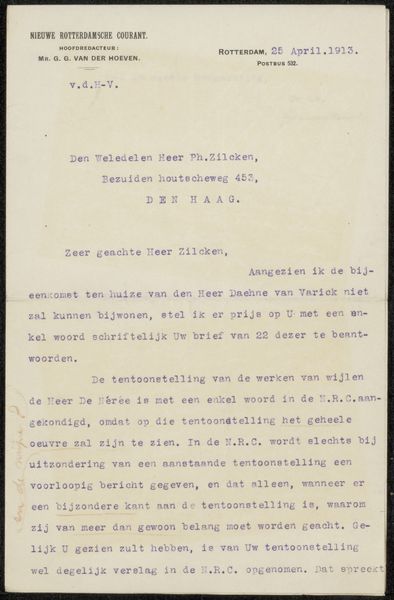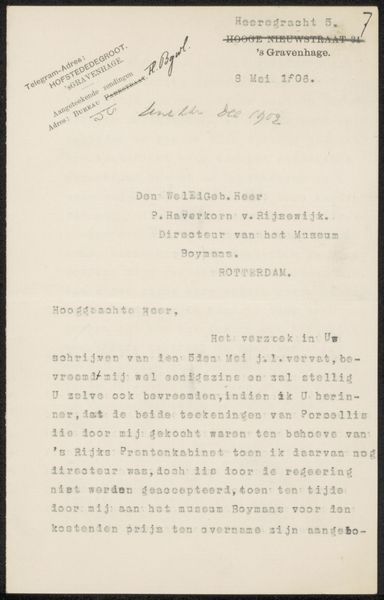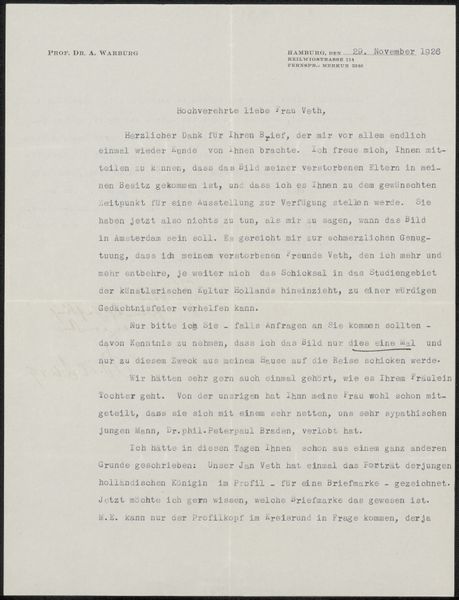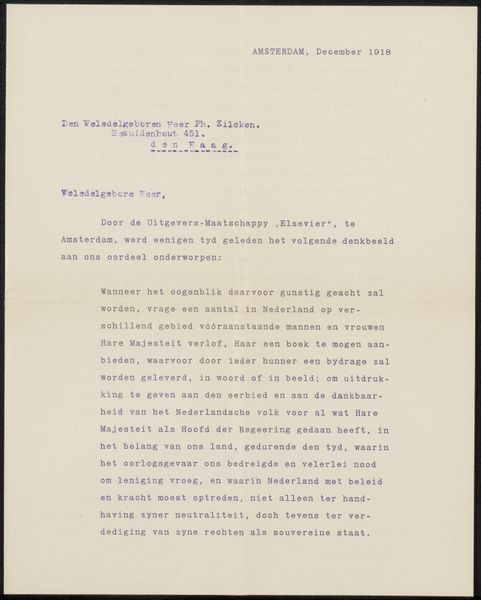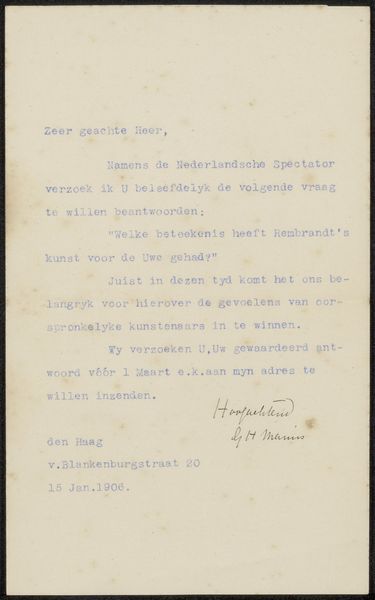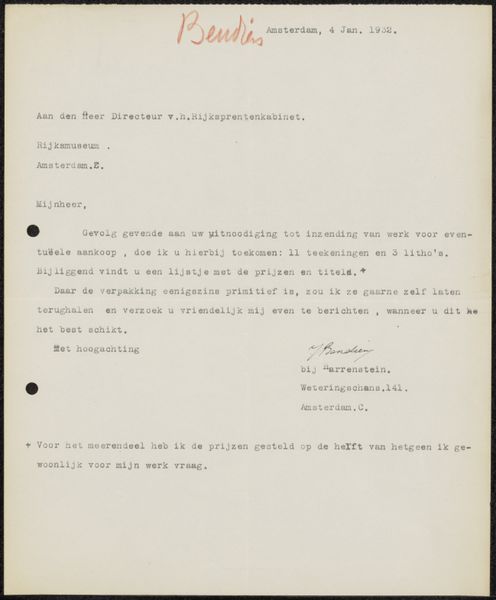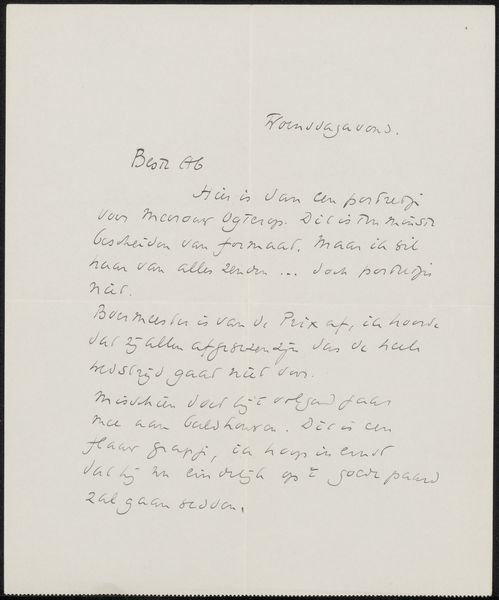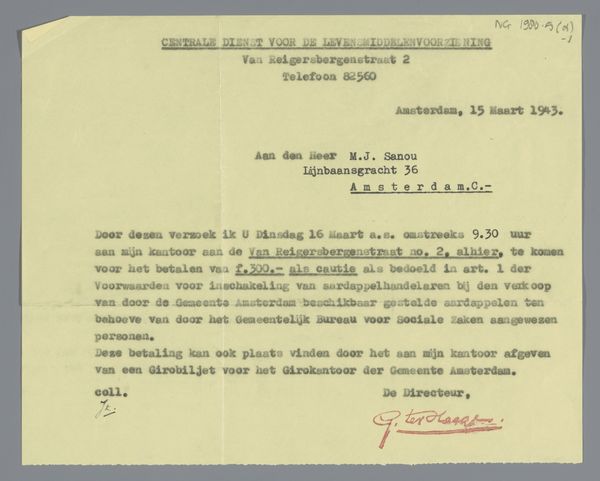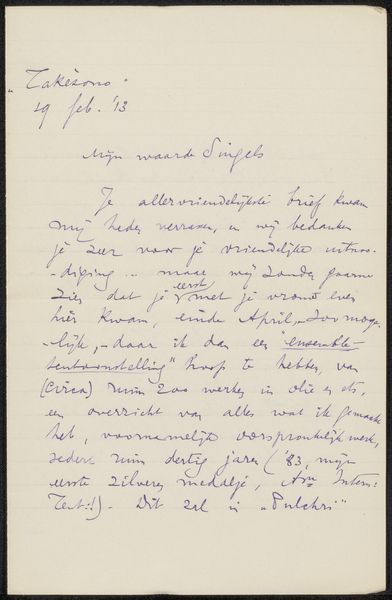
drawing, paper, ink, pencil
#
drawing
#
aged paper
#
script typography
#
hand-lettering
#
ink paper printed
#
old engraving style
#
hand drawn type
#
paper
#
ink
#
hand-drawn typeface
#
pencil
#
thick font
#
handwritten font
#
golden font
Copyright: Rijks Museum: Open Domain
Curator: This brittle-looking document is a letter, addressed to Philip Zilcken, quite possibly written between 1911 and 1916 by Sebastiaan M.S. de Ranitz. It appears to be created using a combination of ink, pencil, and paper. What is your initial reaction? Editor: It has an incredibly intimate feel. It’s more than just an exchange of information; I imagine it captures a particular time, place, and sensibility. You can almost smell the aging paper. Curator: Exactly. As a letter, it presents some insight into the cultural infrastructure of art. The script typography hints at the intersection of artistry and institutional correspondence, with what appears to be the letterhead “Grootmeester van H.M. de Koningin-Moeder”, loosely translated to "Grand Master of H.M. the Queen Mother”. We could dig further to situate this letter in relation to artistic patronage and the Queen Mother's influence on the art world during that period. Editor: Precisely. Also, the letter itself expresses a hope that some "jonge man" (young man) may benefit from someone's leadership. If this young man was supported by the royal court, there are potentially serious social and economic consequences to investigate within the art system. It underscores the power dynamics inherent in art promotion and recognition. Curator: And, from a critical perspective, we might question the extent to which such systems fostered inclusivity or reinforced existing power structures, thinking about gender, class, and race in relation to who had access and support. What do you make of the letter's impact now? Editor: Now, I read it as a tangible record of a bygone era, which prompts deeper questions about how institutions operate and how creative talent is cultivated - or hindered. It prompts discussions of power. Curator: Indeed. This small note provides a lot to unpack and invites contemporary perspectives. Editor: Agreed; viewing a piece like this through its social, cultural, and institutional context truly transforms its impact and resonates in our times.
Comments
No comments
Be the first to comment and join the conversation on the ultimate creative platform.
